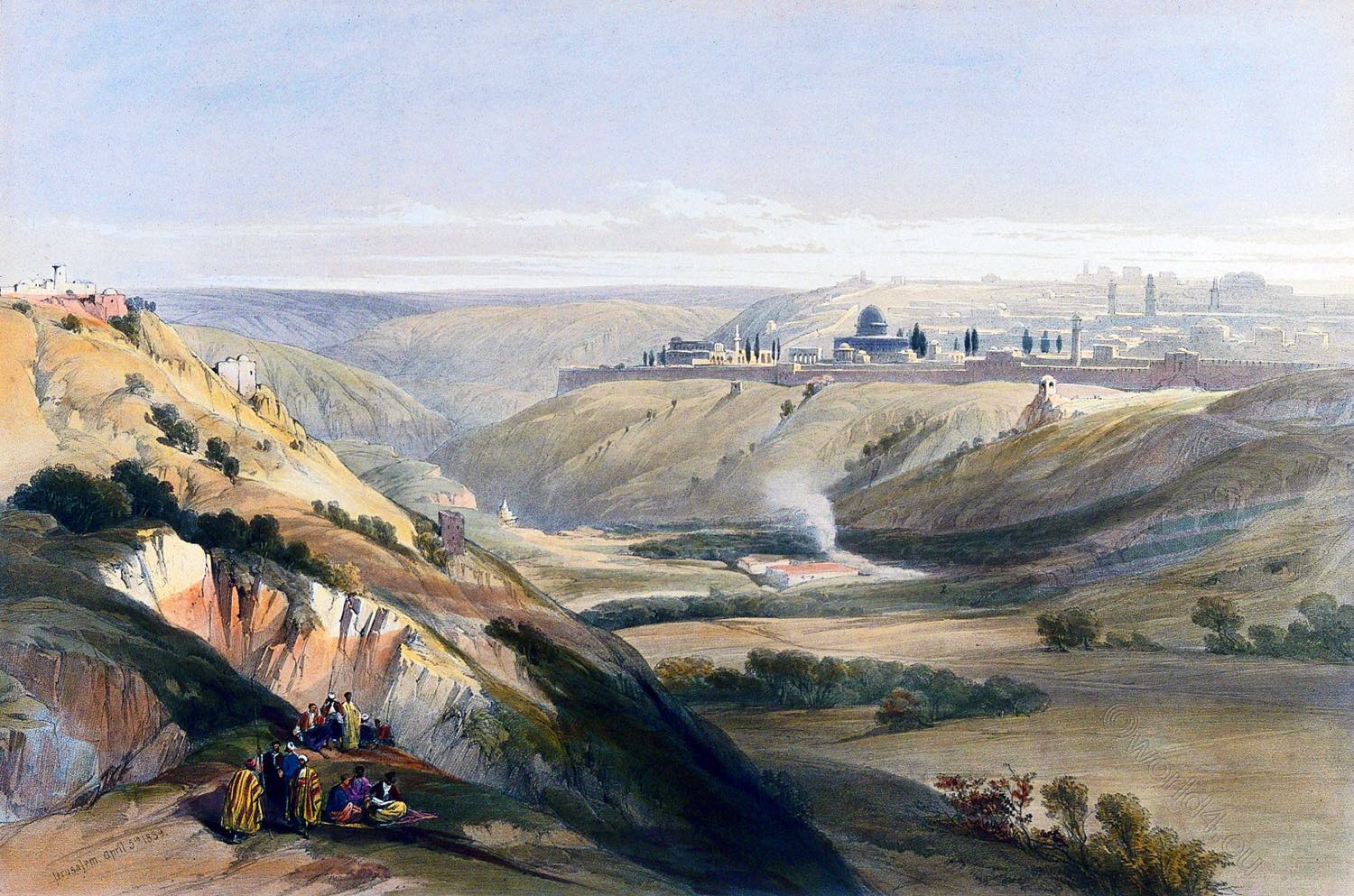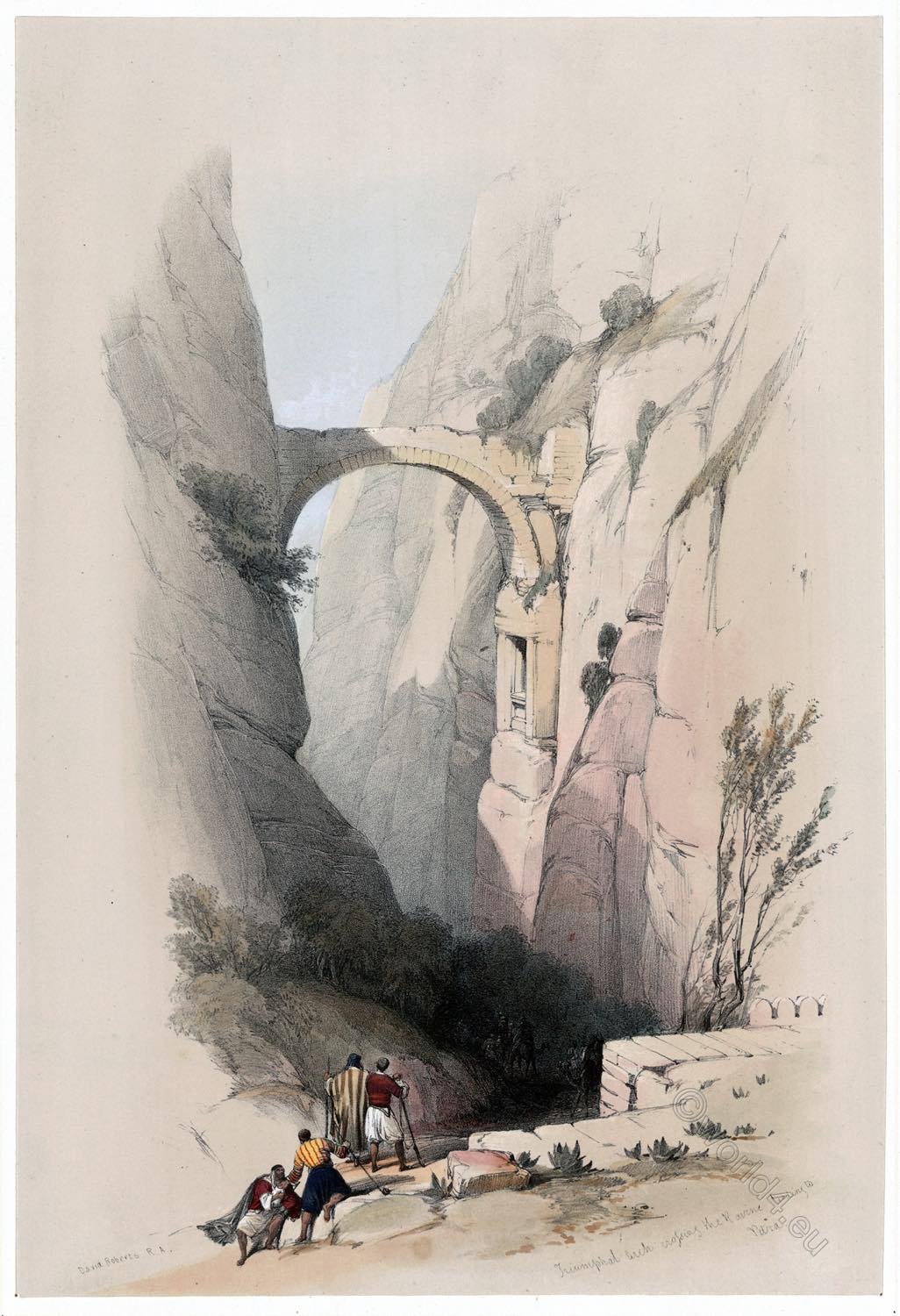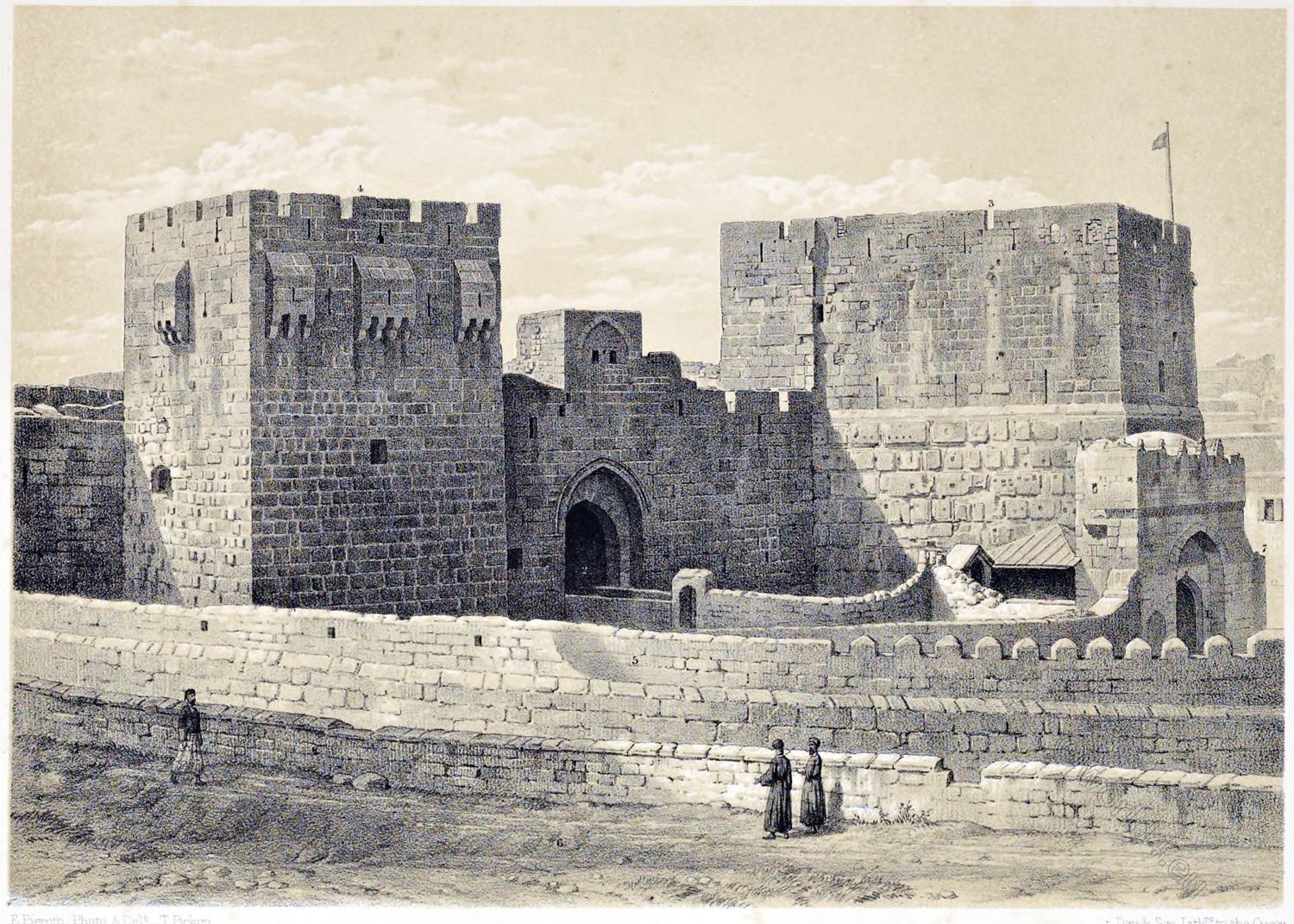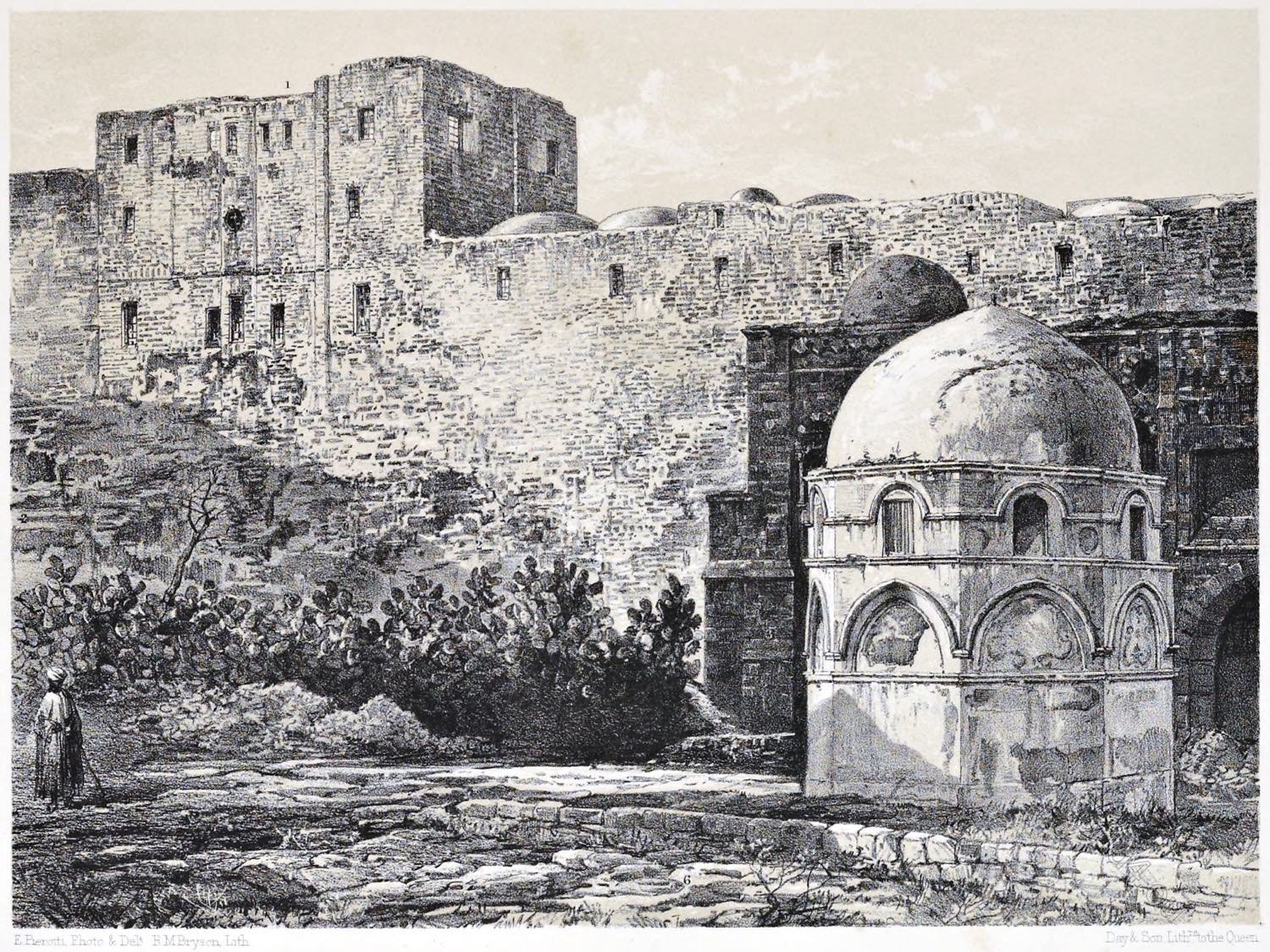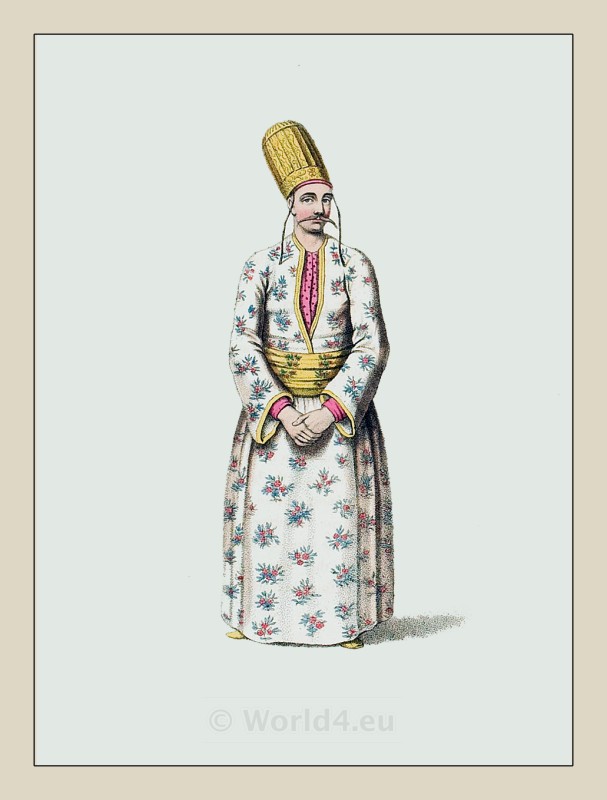
THE DAMASCUS GATE.
by David Roberts
The Damascus Gate or Bab al-Amud is the largest city gate of Jerusalem.
In the foreground, a group of men appear to be leaving the area with their camels along a pathway. There are other groups of men gathered on both side of the pathway, and closer to the Gate by the door. The land on either side of the pathway is hilly.
The illustrator has focused solely on the Gate portion of the wall, so it appears that the Gate is standing on its own. The archway around the Gate’s door has a mixture of tan and orange stones. There are two small abutments on the upper area of the wall. There are also decorative pieces along the wall on both the lower and upper levels.
Towards the top of the gate are two small turrets and two decorative areas that may have observation or weapon slits. The gate has a crenelated, or decorative, edge along the entire top. Written beneath the image is “Pubd. by F.G. Moon 20 Threadneedle St. July 1st 1841.”
The Damascus Gate is one of the main gates of the Old City of Jerusalem. Today’s Damascus Gate was built during the extensive renovation of the Jerusalem city wall under Sultan Suleyman the Magnificent in 1535-1538. Excavations uncovered the remains of the ancient gate, which dates back to the time of Hadrian, when the street level was lower.
The gateway is located on the north side of the old city and leads into both the Muslim and Christian quarters (the other quarters are the Jewish and Armenian quarters).
The walls of Jerusalem are chiefly modern and Saracenic, but are built evidently on the site of more ancient walls, raised in the time of the Crusaders, and those, not improbably, formed of the material of others still more ancient. They consist wholly of hewn stones, in general not of remarkable size, and laid in mortar.
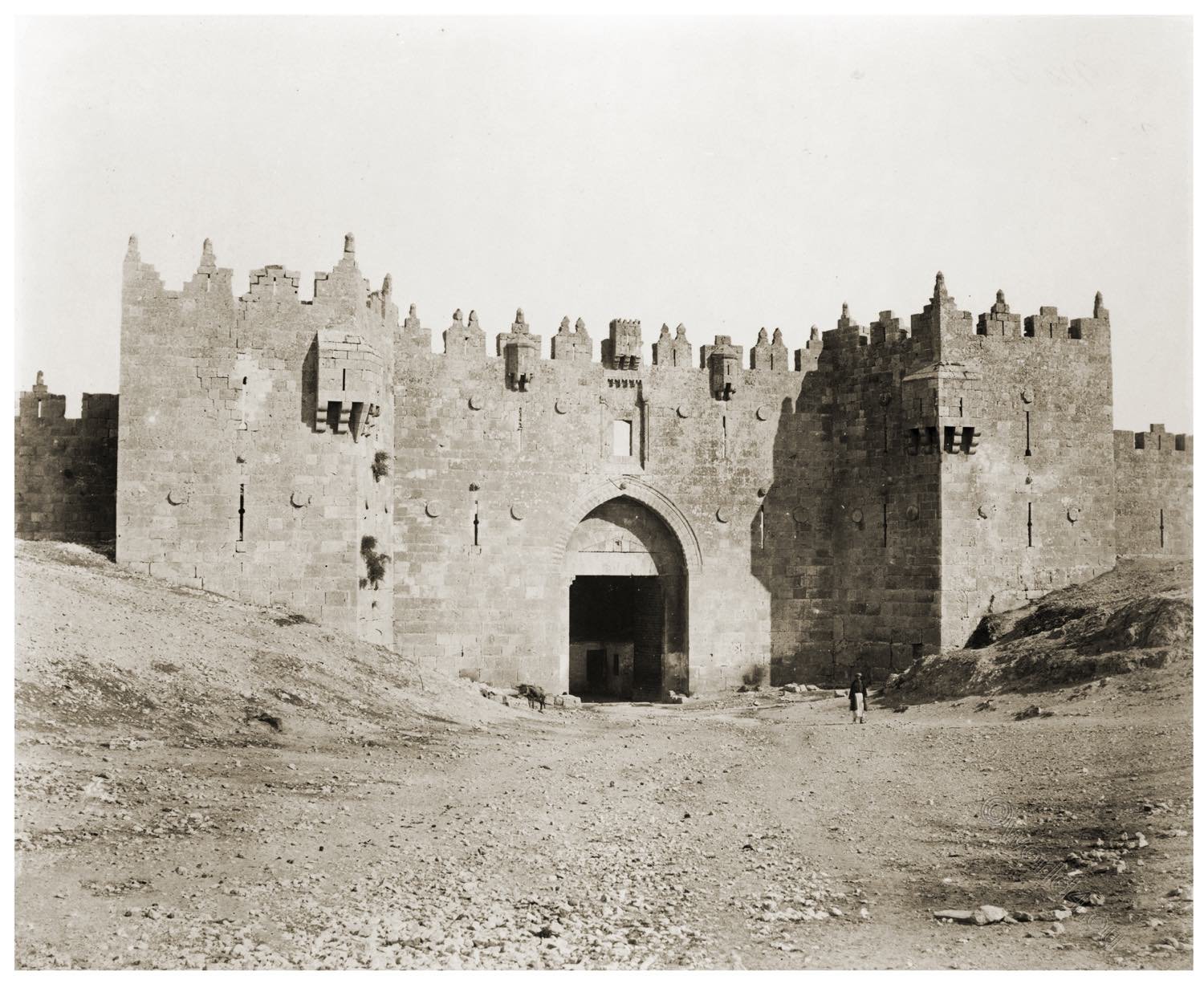
An Arabic inscription over the Yaffa Gate gives the rebuilding to Sultan Suleiman, in the year of the Hegira 948 (a.d. 1542). The walls are still stately, and, at a distance, picturesque; they have towers and battlements, the latter crowning a breastwork with loopholes. A broad walk passes along the top of the wall, protected by the breastwork, and reached by flights of steps from within. Their height varies according to the in- equalities of the ground outside from twenty to fifty feet.
Jerusalem has four open gates and four walled up: which seem in general to retain the places of still older ones, and, in some instances, to be older than the walls. Of the four open gates, facing the four points of the compass, that of which the view is given looks to the north, and is called by the natives Bab-el-Amud, or “Gate of the Pillar.” The “Damascus Gate” is a name given by the Europeans, from its leading to Damascus and Nabulus by the great northern road. It is more ornamented than the others, and forms a striking object to the traveller.*)
*) Roberts’s Journal. Robinson, Biblical Researches, vol. i. 386.
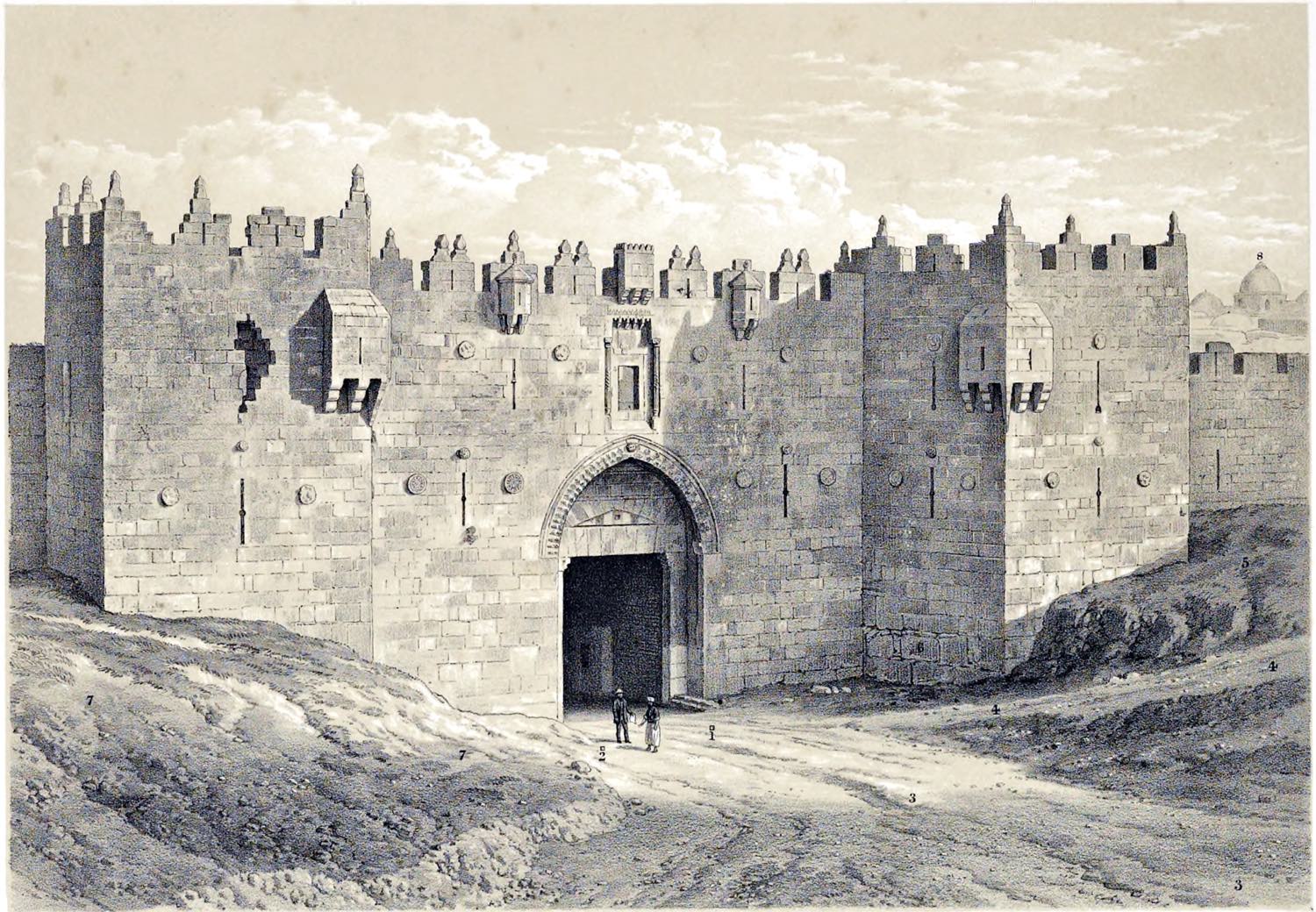
PLATE VII.
GATE OF DAMASCUS.
- Cistern.
- Cistern in which, the Author found the Old Northern Gate mentioned by Josephus.
- Northern Road.
- Road going round the City.
- Elevation of the ground.
- Ancient Wall of Herod. Masonry of Herod’s Wall.
- Path leading into the Royal Caves.
- Dome of the Church of the Resurrection.
Source:
- The Holy Land, Syria, Idumea, Arabia, Egypt, & Nubia, by David Roberts, George Croly, William Brockedon. London: Lithographed, printed and published by Day & Son, lithographers to the Queen. Cate Street, Lincoln’s Inn Fields, 1855.
- Jerusalem Explored. Being a description of the ancient and modern city, with numerous illustrations consisting of views, ground plans, and sections by Ermete Pierotti; translated by Thomas George Bonney (Fellow of St Johns College, Cambridge). London: Bell and Daldy; Cambridge: Deighton, Bell and Co. 1864.
Continuing
Discover more from World4 Costume Culture History
Subscribe to get the latest posts sent to your email.


